Thumbnails
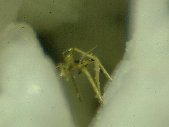
Pyrite crystals
Photo by Violet Anderson
© Royal Ontario Museum
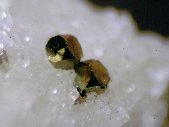
Pyrite crystals
Photo by Violet Anderson
© Royal Ontario Museum
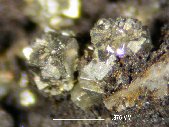
Pyrite crystals
© Doug Merson
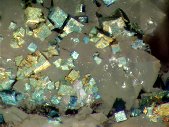
Pyrite crystals
© Modris Baum
FeS
Pyrite is by far the most abundant sulfide mineral, occurring in virtually all mineral associations. It is most abundant in the hornfels and altered pegmatites, as well formed crystals of many habits and as masses intermixed with other sulfides.
PHYSICAL CHARACTERISTICS:
Color is brass yellow.
Luster is metallic.
Diaphaneity is opaque.
Crystal System is isometric; Pa3.
Crystal Habits include simple cubes to 5cm on edge, pyritohedrons
and filiform pyrite to 10mm have been found.
Cleavage {100} indistinct.
Fracture is conchoidal to uneven.
Hardness is 6 – 6.5
Specific Gravity is approximately 5.0 g/cm
Streak is greenish-black.
Associated Minerals include a long list of minerals with the most
common being: albite, analcime, calcite, dolomite, natrolite, nepheline,
rutile, siderite and zircon.
Distinguishing Features: easily distinguished from marcasite by
crystal habit and forms.
Origin: Named in Antiquity from the Greek, pyr, fire, alluding to its
sparking when struck.
CLASSIFICATION:
Dana System
# 2.12.1.1
Strunz Classification
# II/D.17-30
REFERENCES:
MinRec 21:330 (1990), Dana 8:114-115 (1997)
DISTRIBUTION AND RARITY AT MONT SAINT-HILAIRE:
MSH
¤¤¤
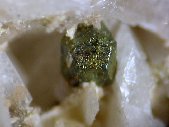
Pyrite crystals
© Steven Stuart
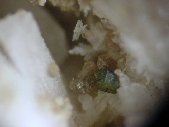
Pyrite crystals
© Steven Stuart
